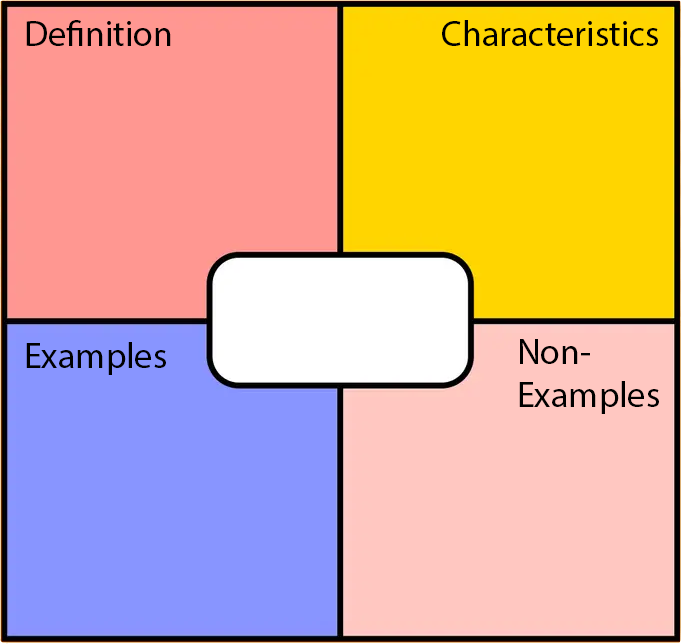Activities for Teaching the Components of Reading: One Teacher’s Tool Box

by Nancy Coggeshall
Throughout my career in education, I have dedicated myself to promoting literacy. After teaching K–12 as a classroom teacher and later as a reading specialist, I transitioned into adult education where I have continued championing literacy among the students I teach. I have observed that adult learners often come with varying levels of skills and deficits in reading, which are not always sequential like those of children. These differences can lead to uneven reading profiles and levels. Regardless of their reading level, adults require support and practice in all components of reading; including alphabetics and decoding, vocabulary, fluency, and comprehension. My instructional recommendations for addressing these components are drawn from Susan McShane’s (2005) work, Applying Research In Reading Instruction for Adults: First Steps for Teachers. Let’s explore some classroom activities that can effectively support these components.
Time is always limited in my classroom, so I incorporate activities that cover multiple components. One of the essential activities in adult classrooms is providing dedicated time for independent reading during each session. Supplying reading materials in advance of class time proves beneficial, enabling students to get a head start on the material. When time is scarce, breaking the reading material into smaller segments or assigning reading as students arrive can be valuable. I particularly enjoy organizing book clubs to foster community and encourage active participation among students. This approach has proven highly effective in creating a connected and engaged learning environment. Recommending book club titles from platforms like BookBrowse.com, Oprah’s, and Reese Witherspoon’s book clubs has been fruitful. Offering a curated selection of books and letting the class decide what to read has also been effective in my experience. When securing multiple copies of books poses a challenge, students can sign up at a local library to access a reading service like Hoopla, which allows multiple users to borrow the same book. This app is compatible with phones, tablets, and computers. One of the first books I selected for a book club was The Hunger Games by Suzanne Collins, which the students immensely enjoyed and led to lively discussions. Book clubs can be used for all of the reading components.
Adult readers can enhance their vocabulary with the instructor pre-teaching important terms, context clue activities, and word analysis exercises. One effective vocabulary activity that I particularly enjoy is the “10 Important Words” exercise. This activity can be utilized consistently across different content areas and during reading instruction, empowering the teacher and the students with a versatile tool.

To begin, provide students with ten sticky notes (five or even three if the reading selection is shorter). Next, have the students read an assigned passage to themselves and jot down the ten most crucial words, one on each sticky note. Encourage them to record words as they read, allowing them to replace words if they find more than 10.

After reading, the sticky notes are used to create a class bar graph, which the teacher and students then discuss. This discussion focuses on the most frequently chosen words, the reasons behind their choices, and the insights provided by these words about the text. Students are then tasked with writing a one-sentence summary of the selection using these words. Additionally, students can complete various assignments using these words, such as writing sentences, employing the Frayer Model, composing definitions, synonyms, or antonyms for the words, and even using the words for mini-lessons on decoding and phonics.

This activity can be applied to any nonfiction text and requires minimal preparation, making it my preferred approach for enhancing vocabulary and comprehension.
The components of alphabetics and decoding include phonemic awareness, phonics, and decoding. Many adult readers benefit from explicit, systematic phonics instruction to build their decoding skills. I assess my students with a Qualitative Spelling Inventory (QSI) such as Ganske’s DSA Feature Inventory or Words Their Way at the beginning of each class session to identify gaps in phonics and decoding. These assessments are important for planning writing and help in developing an academic tone for our students’ writing. The Upper-Level Spelling Inventory from Words Their Way helps identify areas in which our higher students need instruction. The QSI provides the developmental sequence for teaching phonics, which is helpful when planning instruction. I incorporate phonics and decoding instruction into my lessons using the material we are reading and the developmental sequence from the QSI. We use word cards for sorting activities and discuss and devise rules as a group based on the students’ input, even if it deviates from the phonics skill I was planning on.
The key to effectively teaching the components of reading is to connect them with the learner’s aspirations using authentic materials. My shared activities can be adapted to different materials and used repeatedly. The advantage of having versatile activities at your disposal is substantial. As students engage in these activities multiple times, albeit with other content, they develop skills that they can independently apply without any external prompting. Ultimately, the goal is for our students to confidently utilize the components of reading for their learning and enjoyment.
 Nancy Coggeshall has been an instructor with Middle Peninsula Regional Adult & Career Education (MP R.A.C.E.) for the past 12 years. She is a certified Reading Specialist with a master’s degree in curriculum and instruction from Eastern Mennonite University. Nancy is also a VALRC adult education professional development facilitator for the Foundation of Reading: Print Skills and Foundation of Reading: Meaning Skills courses.
Nancy Coggeshall has been an instructor with Middle Peninsula Regional Adult & Career Education (MP R.A.C.E.) for the past 12 years. She is a certified Reading Specialist with a master’s degree in curriculum and instruction from Eastern Mennonite University. Nancy is also a VALRC adult education professional development facilitator for the Foundation of Reading: Print Skills and Foundation of Reading: Meaning Skills courses.